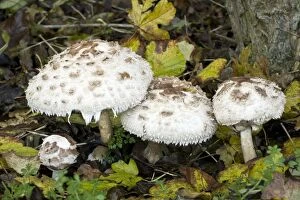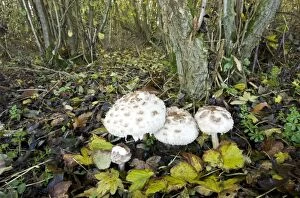Lepiota Collection
Lepiota, also known as the Parasol mushroom or Macrolepiota procera, is a fascinating species that captures the attention of mushroom enthusiasts worldwide
All Professionally Made to Order for Quick Shipping
Lepiota, also known as the Parasol mushroom or Macrolepiota procera, is a fascinating species that captures the attention of mushroom enthusiasts worldwide. With its distinctive appearance and unique characteristics, it stands out among other fungi in the wild. One of the most recognizable features is its large cap resembling a parasol, hence its common name. This umbrella-like structure can reach impressive sizes and has an intricate pattern of freckles or scales on its surface. These markings give it an enchanting allure that draws both amateur foragers and professional mycologists alike. Native to Europe but found across various regions globally, including Washington in the USA, Seabeck offers a close-up view of this shaggy parasol mushroom's underside. The detailed image showcases its gills and highlights their importance in spore production. While some mushrooms may be poisonous or even deadly if consumed, Lepiota procera falls into the category of edible mushrooms. Its culinary potential makes it highly sought after by those who appreciate gastronomic delights derived from nature's bounty. In botanical plates dating back to 1900, we find depictions contrasting "Good" and "Bad" Mushrooms – emphasizing how crucial accurate identification is when venturing into foraging expeditions. Proper knowledge ensures our safety while exploring these natural wonders. Shield Dapperling (Lepiota clypeolaria) is another member within this diverse genus worth mentioning due to its distinct appearance. Found in different parts of Europe like Baden-Wuerttemberg in Germany, this particular species exhibits captivating white caps with delicate patterns adorning their surfaces. Pearly powdercap (Cystoderma carcharias), captured beautifully in Untergroeningen through stunning photography showcases yet another intriguing member within the Lepiota family. Its ethereal presence adds charm to any woodland setting where it thrives effortlessly.















